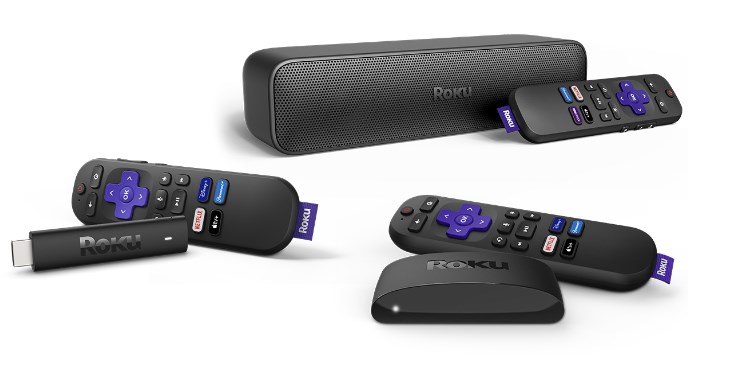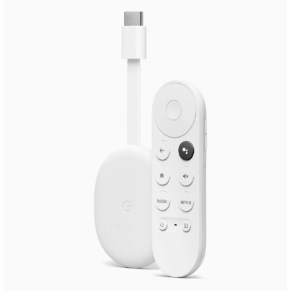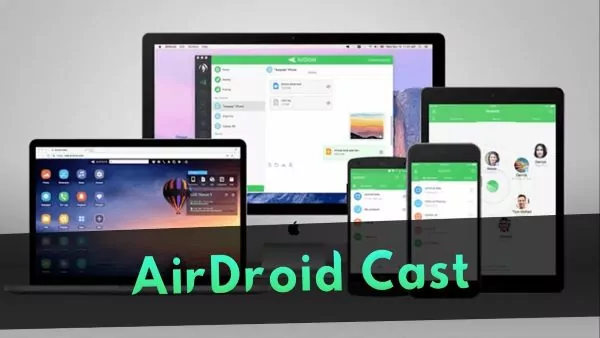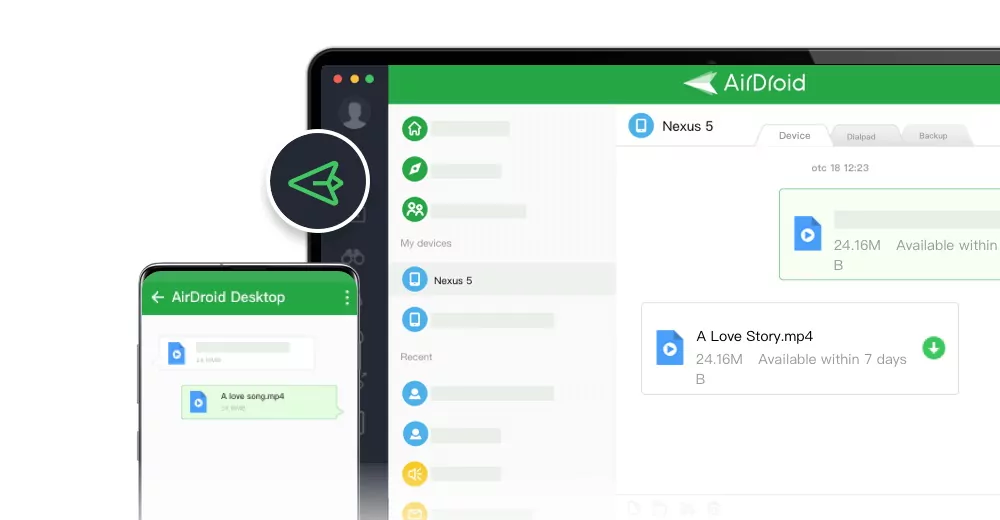Chromecast vs Roku: A Comprehensive Comparison for 2024
Watching the shows you love should be simple and enjoyable. But picking between Chromecast and Roku is not that easy.
The debate between these casting devices is well known to those searching for the perfect streaming solution.
The Google Chromecast and Roku Streaming Stick have unique capabilities to stream videos or enjoy streaming services. To help you decide the perfect streaming device which suits your needs, we are going to draw attention to a few differences between both of them.
Ready for the deep dive? Let's begin with a Quick Overview of Roku Vs Chromecast.
Quick View of Roku Vs Chromecast
Roku and Chromecast have changed the home entertainment experience for millions.
Roku, which first debuted in 2008, offers a number of models like the Roku Streaming Stick all the way to the latest Roku Ultra.
These devices plug into your TV and allow it to stream from hundreds of streaming services. Navigation is easy with Roku's user-friendly interface and includes a remote.
Google Chromecast, first released in 2013, takes a slightly different approach. Users can cast video from their smartphones, tablets or computers to the TV.
The latest model is the Chromecast with Google TV has a remote and on-screen interface along with the casting features of previous models.
Both devices support popular streaming services like Netflix, Hulu and Disney+ and many more. Roku shines with its broad app store and simple user experience.
Chromecast's real strength lies in the flexibility of integration with Google services.
Each device has its strengths, catering to different streaming preferences and needs.
| Features | Roku | Chromecast |
|---|---|---|
| Price Range | $29.99 - $99.99 | $30 - $65 |
| User Interface | Roku OS with channels, app store, and search functionality | Google TV, managed via Google Home app |
| Connections | HDMI, older Express+ with composite A/V ports | HDMI |
| Vision Quality | HD (up to 1080p), 4K (Premiere, Premiere+, Streaming Stick+, Ultra) | HD (up to 1080p), 4K (Chromecast 4K, Ultra) |
| Controls | Remote with voice control on select models. | Google Assistant on remote, casting from mobile or Chrome browser |
| Content Delivery | Apps and channels browsed via remote or mobile app | Casting from mobile app or Chrome browser, Google TV interface |
| Voice Control | Some models with voice control. | Google Assistant integration for voice commands |
| Additional Features | Private listening, Roku Channel free content, Roku OS updates | Casting, Google Stadia, Nest cam integration |
| Performance | Faster app loading and navigation | Slightly slower app loading |
| Live TV Integration | Live TV Zone with integrated channels | LIVE section with YouTube TV, Sling TV |
| Design | HDMI dongle or set-top box | HDMI dongle |
Roku vs Chromecast: A Model Comparison
Roku (in theory) provides many, many more choices than Google.
But Roku only has a handful of core device categories, and for the most part their standalone devices are mostly just variations of a few main products.
Let's take a closer look.
Roku Models

Roku Express: the cheapest model, starts with $30. Has an IR remote but does not support 4K HDR video or advanced audio.
Roku Express 4K: It supports 4K HDR10 Plus and comes with volume leveling, as well as night modes.
Roku Express 4K Plus: It comes with a voice remote and power / volume buttons.
Roku Streaming Stick 4K Plus: It comes with a Voice Remote Pro that works with a rechargeable battery, and includes features like the find my remote option and customization options for shortcut buttons.
Roku Ultra LT: It has the fast performance you expect, and provides Wi-Fi and an Ethernet port for additional wired speed plus personal listening either through Bluetooth or via remote, done using a Roku app.
Roku Ultra: Added Dolby Atmos and USB media support along with the Voice Remote Pro.
Roku Streambar: It comes with all streaming and sound bar functions in one device, HDMI input/output/, USB/ and optical ports but limited to HDR10.
Roku Streambar Pro: Its sound quality is improved with larger drivers and a new remote but you need extra speakers for surround sound.
Google Chromecast Models

Chromecast with Google TV HD: Google TV is an upgrade of Android TV. This $30 dongle’s limitations include resolution to 1080p.
Chromecast with Google TV 4K: Practically the same as the HD, this upgrade adds 4K including Dolby Vision for the utmost picture.
Key Differences Between Roku and Chromecast
1Chromecast vs Roku: Streaming Quality
Streaming quality is one of the aspects between Roku and Chromecast that you certainly need to take into consideration.
The Standard Chromecast and Roku Express, Express+, and Streaming Stick serve up video in 1080p HD.
For those in need of 4K and HDR compatible options, the Chromecast Ultra and Roku Premiere, Premiere+, Streaming Stick+ and Ultra offer excellent output.
Choose a 4K-capable device only if you have access to a good, fast internet connection capable of showing off all the extra sharpness your TV can reveal.
2Chromecast vs Roku: Interface Insights
Roku and Chromecast take very different approaches to the user interface.
Roku has its operating system, the Roku OS and features a multitude of apps that can be downloaded from the Roku Channel Store.
The store has a wealth of settings available and ways to search for content making finding your desired media easy.
Roku's home screen also features a simple layout with a menu on one side and apps for top streaming services on the other.
Unlike the Roku, Chromecast has no user interface to speak of.
Rather, it lets the users load all of the applications they usually view on their phone or tablet onto a TV.
The interface of the streaming service being cast is mirrored on your device.
The setup is done through the "Google Home" app which you can download via Apple Store and Play store.
With this app, casting can be personalized to the user by downloading different apps on their mobile devices.
Roku, on the other hand, allows its users to customize how they wish-to watch by downloading and organizing apps right from The Roku Channel Store.
And that puts Roku into a more standalone option, while Chromecast relies on other devices to do its work.
3Chromecast vs Roku: Performance
Are you concerned about what is the fastest streaming TV device?
Truth be told, when compared to the Apple TV 4k, they both lag behind very noticeably.
The Chromecast with Google TV generally has a sluggish interface that takes longer to pull up certain apps. Neither of which is a dealbreaker, but the Roku Streaming Stick 4K does boot apps faster.
Roku may be a better choice if your top priority is speed.
4Chromecast vs Roku: Audio and Video Quality
Both Chromecast and Roku Streaming Stick+ support HDR10 to increase the color saturation lifted by high contrast levels.
There’s a significant difference in the audio formats that they support. In terms of dynamic range and picture quality, Chromecast has an added advantage since it can also support Dolby Vision.
On the other hand, whereas the Roku falls short by not having Dolby Vision video support, it provides just as much sound quality; DTS surround sound, Dolby Audio, and Dolby ATMOS.
5Chromecast vs Roku: Content and Channels
Roku has 350+ free channels and thousands of paid ones that can be downloaded via the Roku Channel Store. This makes it one of the best options for streaming.
"The Roku Channel" is a proprietary product of the company which flaunts an array of free and premium TV channels and shows.
You can check out the list of all the channels available on Roku here.
Traditionally, Chromecast devices were used to cast videos from phones, tablets, or PCs to your TV.
With Chromecast with Google TV, you can select live TV services like YouTube TV, fuboTV, Sling, or DIRECTV STREAM, offering a variety of live, local, and national channels.
Additionally, Google TV includes free live TV channels without requiring app installation, sign-up, or subscription.
Chromecast and Roku provide access to popular streaming services like YouTube, Netflix, Amazon Prime Video, HBO, ESPN, major news networks and sports broadcasters.
Ensure your preferred channels and services are available before making a purchase.
6Chromecast vs Roku: Compatibility
Both Roku and Chromecast devices can easily be connected directly on your TV with a HDMI port.
Roku Streaming Stick, Streaming Stick+, Chromecast or Chromecast Ultra plug into the HDMI port in your television.
In contrast, all the other Roku models need an external HDMI cable to be plugged in.
While the basic Roku models have a simple remote, higher end versions of this streaming device will feature voice control that makes finding shows and movies like a breeze.
Also, certain Premium Roku remotes can power on and off the TV as well control 3rd party functions such as volume control, helping reduce remote clutter in the living room.
Roku also offers an app for Android and iOS devices beyond the physical remote.
This app is good for someone who has a Roku streamer and uses many devices in home. They can manage all the streaming on this app easily by simply switching between different Roku devices.
Conclusion
This ultimately means that your decision between Chromecast and Roku will come down to the content you primarily watch.
If you value a smooth, snappy interface and the simplicity of a standalone box that brings everything together for you then Roku is your best option with its user friendly OS, expansive channel store, app library and customization options
Users who like to cast content from their mobile device and appreciate the freedom of Google should definitely go with a Chromecast. If you have a high-end TV and are willing to spend extra for better video quality, Chromecast's own Dolby Vision version provides it.
As much as the fact remains both devices are good choices for streaming and leave you to consider whatever streamer experience is best well-matched with your tastes.
So is Roku better than chromecast? Feel free to share your opinions! Let me know in the comments which of these (or other) streaming devices you prefer and why.










Leave a Reply.